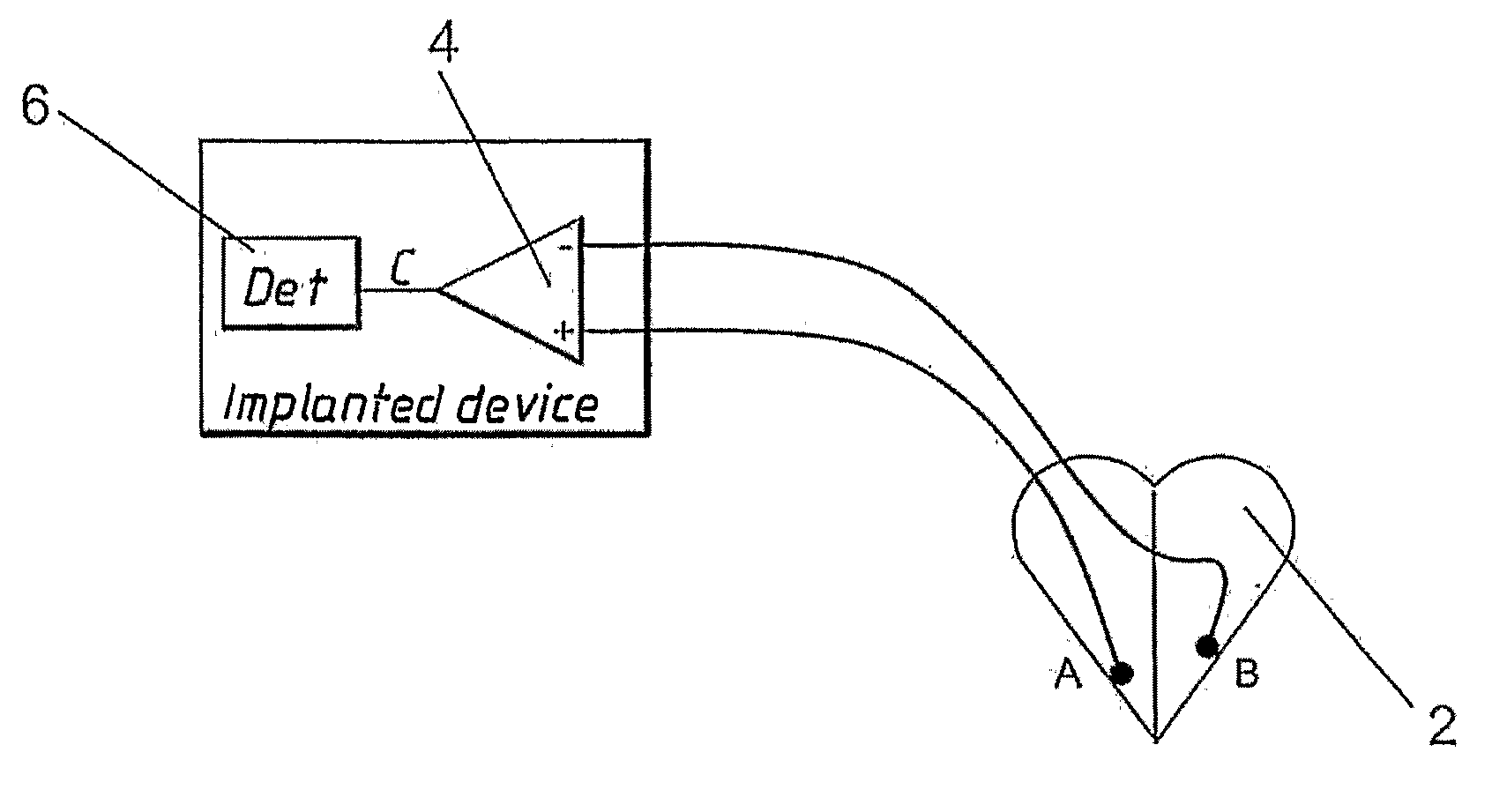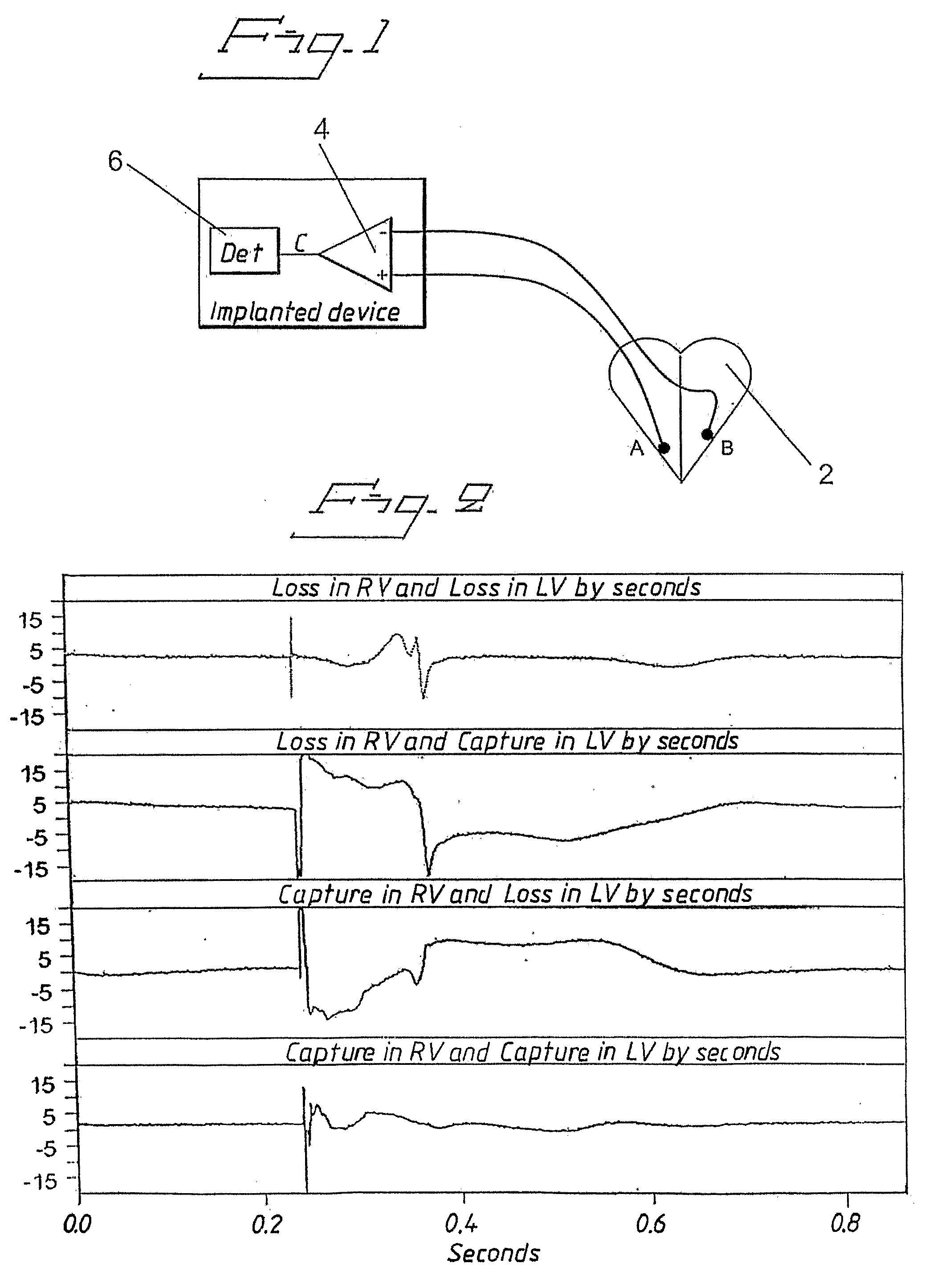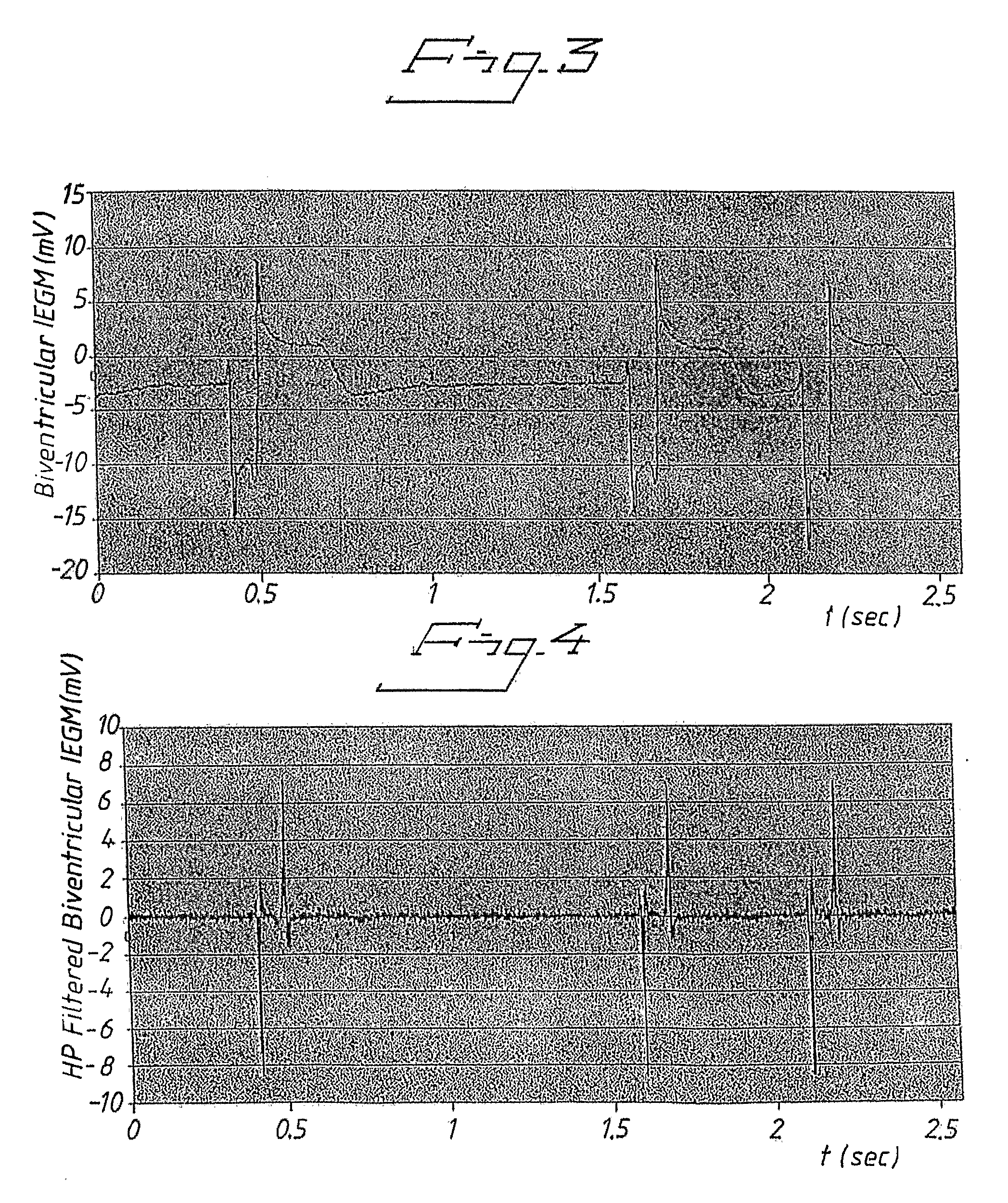System and method for detecting electric events in chambers of a heart
a heart and chamber technology, applied in the field of system for detecting electric cardiac events in chambers of hearts, can solve the problem that the signal-to-noise ratio is often unacceptable low, and achieve the effect of improving the signal-to-noise ratio
- Summary
- Abstract
- Description
- Claims
- Application Information
AI Technical Summary
Benefits of technology
Problems solved by technology
Method used
Image
Examples
Embodiment Construction
[0028]FIG. 1 shows schematically an implanted device comprising a bi-ventricular pacemaker system having bi-ventricular sensing. One electrode A is implanted in the RV of a heart 2 and another electrode B is implanted in a coronary vein on the LV. The sensed difference signal C obtained as output signal from the difference forming means 4 is supplied to an event detector 6 for determining both origin and time of electric cardiac events.
[0029]FIG. 2 shows IEGMs recorded between tip electrodes in RV and LV, cf. FIG. 1, in heart failure patients having LBBB after bi-ventricular pacing between the tip electrodes.
[0030]The curve at the bottom of FIG. 2 shows that capture in both ventricles results in a very small IEGM signal because the evoked responses practically eliminate each other since the signal amplitudes are about the same. The measured RV evoked response signal amplitude amounted to 13.1 mV and the LV evoked response signal amplitude to 14.2 mV.
[0031]The second curve from below...
PUM
 Login to View More
Login to View More Abstract
Description
Claims
Application Information
 Login to View More
Login to View More - R&D
- Intellectual Property
- Life Sciences
- Materials
- Tech Scout
- Unparalleled Data Quality
- Higher Quality Content
- 60% Fewer Hallucinations
Browse by: Latest US Patents, China's latest patents, Technical Efficacy Thesaurus, Application Domain, Technology Topic, Popular Technical Reports.
© 2025 PatSnap. All rights reserved.Legal|Privacy policy|Modern Slavery Act Transparency Statement|Sitemap|About US| Contact US: help@patsnap.com



